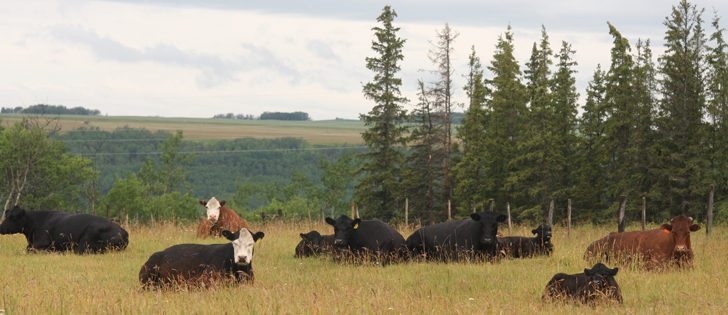Manitoba’s agriculture minister hasn’t officially set a goal for cattle herd expansion in the province, but he has an unofficial number in mind.
In a brief speech at the Manitoba Beef and Forage Initiative research farm near Brookdale, Man., Ralph Eichler said the province could and should dramatically increase its cow herd.
“I’d like to see 750,000, is what I’d like to get back to, if not higher,” Eichler said July 26 before a field tour at the MBFI farm.
“I know it’s ambitious … but I’d rather set my goal a little higher…. I see it taking probably eight or nine years, maybe 10.”
Read Also

Canadian Food Inspection Agency slammed for handling of bovine tuberculosis case
The federal government leans heavily on producers to “take one for the team” and risk their livelihoods without any reassurance of support.
The target is ambitious because Manitoba had 440,000 beef cows as of Jan. 1, based on Statistics Canada data.
Including dairy cows, Manitoba had 485,000 cows Jan. 1.
The province’s beef herd has declined steadily in the last decade, and the trend has continued in recent years despite strong cattle prices.
Eichler said the flood of 2011, which devastated hay and pasture land around Lake Manitoba, had a significant impact on the province’s cattle sector.
“The average herd up there was about 500 cows,” he said.
“When we saw those leave … (it’s) still not back to where it (needs to be).”

Eichler said the provincial government has a role in rebuilding the cattle industry, possibly through incentive programs for new entrants.
“There are things we can do as government to help young producers get involved,” he said.
“There are some (financial incentives) now but not to the extent where I think they need to be.”
Another possibility is working with businesspeople who want to own but not operate cattle ranches.
“We have had some very positive meetings with some other investors that want to have young people manage their farms,” Eichler said.
“Let’s take advantage of that opportunity and bring that investment in.”
The minister’s target may be unofficial, but it’s a positive sign for cattle ranchers, said Heinz Reimer, Manitoba Beef Producers president.
“I think you always have to have a goal. If you don’t have a goal, what are you going to shoot for?” he said.
“For myself, in anything I do, I always set a goal…. You’ve got to have something to reach for.”
Reimer said the country’s beef industry has struggled to attract new entrants, and there are no simple solutions.
Manitoba’s previous NDP government emphasized slaughter plants, hoping new facilities could reinvigorate the province’s beef sector. In 2006, it created a voluntary $2 checkoff on all cattle sold to fund the Manitoba Cattle Enhancement Council, which was to expand slaughter capacity in the province.
The MCEC failed to attract private investment in a beef slaughter plant, and the government terminated the checkoff and the council in 2014.
In the aftermath of MCEC, True North Foods opened a federally certified slaughter plant in Carman, Man. The plant can slaughter up to 200 head per day of cattle, bison and elk.
Reimer said True North has been beneficial for Manitoba cattle producers, but he’s not convinced the province is well suited for additional slaughter plants.
“We’re a cow-calf (province). We’re not a feedlot (region) where a lot of cattle get finished,” he said.
“I can’t see us growing our slaughter capacity a whole lot.”
robert.arnason@producer.com
















